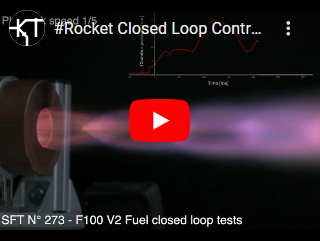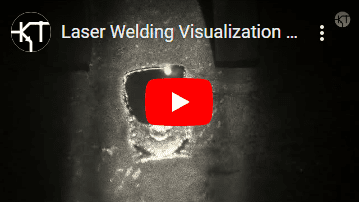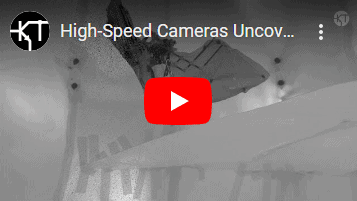High-Speed Cameras for Engineering Research & Development
Chronos high-speed camera systems offer the framerate, video quality and price-point critical to researchers at Engineering R&D facilities.
Capturing high-quality, detailed video down to the millisecond is critical for detailed analysis of many Engineering and R&D projects. Moreover, when the recorded footage is paired with measurement software, engineers can extract parameters such as displacement, velocity, and frequency values, to name a few. This valuable data is used to gain further insight into the process of monitoring or to optimize. Engineers around the world rely on Chronos cameras when looking to track, measure, and analyze the fine details of their projects.
To substantiate this claim, the following projects are worth mentioning. In India, an engineering team has proposed a new technique to resolve the small vibration from cutting tools[1]. Their method can be extended to evaluate mechanisms of material deformation during the cutting process or to apply it in other engineering fields.
In Malaysia, a country with one of the highest incidences of lightning strikes in the world, a team of engineers used a Chronos camera to analyze fork lightning formation[2]. Their work can lead to the design of more effective lightning protection strategies for the safety of villagers.
Using a Chronos 1.4 high-speed camera, Luberto and Peyrebrune have built a low-cost particle image velocimetry setup[3]. Their setup can be replicated in regions with limited economic and technical resources to enhance educational activities.
The previous examples not only attest that Chronos cameras are used worldwide. They also enable engineers, educators, and regular individuals to have access to state-of-the-art equipment at an affordable price.
Chronos high-speed imaging systems offer an all-in-one, high-frame rate solution for a wealth of demanding Engineering projects. The imaging system can be set up and running in minutes with its easy-to-use interface and accessories. Please visit Krontech.ca and check the accessories available for your Chronos camera. They include triggering devices, SSD storage devices, illumination sources, lenses, and lens adapters.
Applications
- Fluid Dynamics
- Flow visualization
- Schlieren Imaging
- Particle Image Velocimetry
- Particle Tracking Velocimetry
- Tests on product ideas
- Prototyping
- Vibration Analysis
- New Product Development
- Optical Flow Testing
- Impact Testing
- Robotics
- Materials testing
References
- Singh, A., Lambora, R. and Law, M., 2022. Methods to estimate subpixel level small motion from video of vibrating cutting tools. CIRP Journal of Manufacturing Science and Technology, 39, pp.175-184.
- Ramlee, N.A., Ahmad, N.A., Baharudin, Z.A. and Mohamed, A.R., 2020. High-Speed video observations on fork lightning events in Malaysia. Indonesian Journal of Electrical Engineering and Computer Science (IJEECS), 19(3), pp.1620-1625.
- Luberto, L. and de Payrebrune, K.M., 2021. Examination of laminar Couette flow with obstacles by a low-cost particle image velocimetry setup. Physics of Fluids, 33(3).
Some things to consider when choosing a high-speed camera for Engineering R&D are:
Frame-rate
What is the duration and speed of the event?
Chronos range from 1,000 - 40,000 FPS / 3-16 seconds of record time.
Resolution
What is the level of detail required to capture the event?
Chronos range from 1280x1024 to 1920x1080HD max resolution.
Light Sensitivity
What is the lighting sensitivity/contrast required to capture the event?
Chronos range from ISO 320-16,000 depending upon model and sensor type (color or monochrome).
Subject Matter
What is the size and distance from the subject?
Chronos offers a selection of lenses from microscope to 12.5mm-75mm to capture events near or far.
Methods to Estimate Subpixel Level Slow Motion from Video of Vibrating Cutting Tools
Nuhman et al. propose a new way to evaluate and analyze small oscillations observed in cutting tools. The authors used a Chronos 2.1-HD monochrome high-speed camera at 2142FPS to measure the impulse-like response of the cutting tool excited with a modal hammer.
Their proposed method supplies a new way to evaluate small amplitudes of the tool’s oscillations. This may be a way to propel the use of imaging-based analysis procedures in machine tool systems. According to the authors, experimental modal analysis is traditionally preferred to imaging-based systems.
See the study here: Methods to Estimate Subpixel Level Slow Motion from Video of Vibrating Cutting Tools
High-Speed video observations on fork lightning events in Malaysia
Study by N. Asrina Ramlee, N. A. Ahmad, Z. A. Baharudin, A. R. Mohamed
Ramlee et al. used a Chronos 1.4 high-speed camera to study lightning events that occur in Malaysia, a country with a very high lightning strikes incidence. Yet, its citizens are not taking proper lighting protection as seriously as it should be taken.
The scholars used the Chronos 1.4 high-speed camera to record the lightning characteristics at 2800 fps. The usefulness of their research effort is that it may lead to design more effective lightning protection strategies and make the population aware of the danger posed by lightning events.
See the study here: High-Speed Video Observations on Fork Lightning Events in Malaysia
Examination of Laminar Couette Flow with Obstacles by a Low-cost Particle Image Velocimetry Setup
Study by Luca Luberto and Kristin M. de Payrebrune
Luberto and Payrebrune propose a low cost- PIV setup. The system contains a Chronos 1.4 high-speed camera which attests to the affordability of the imaging device.
In many areas of science and engineering, a full analysis of the fluid flow properties is desired. This can be accomplished with the aid of computational fluid dynamics (CFD). However, to assess the performance of CFD results and to obtain hands-on experience experimentation is crucial. With exposure to modern experimental and analytical tools, students, engineers and researchers can gain further insight about fundamental aspects of fluid flow, thus strengthening their academic background. This is especially useful in developing countries or regions with limited financial resources.
See the study here: Examination of Laminar Couette Flow with Obstacles by a Low-cost Particle Image Velocimetry Setup











